The Slavs or Slavic people are groups of people who speak Slavic languages. Slavs are geographically distributed throughout the northern parts of Eurasia; they predominantly inhabit Central Europe, Eastern Europe, and Southeastern Europe and Northern Asia, though there is a large Slavic minority scattered across the Baltic states and Central Asia, and a substantial Slavic diaspora in the Americas, Western Europe, and Northern Europe.
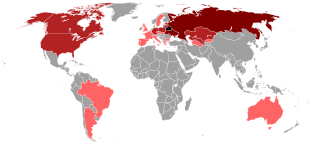
Belarusians are an East Slavic ethnic group native to Belarus. They natively speak Belarusian, an East Slavic language. More than 9 million people proclaim Belarusian ethnicity worldwide. As of the 1st of January 2024, 9 155 978 Belarusians reside in Belarus, with the United States and Russia being home to more than 500,000 Belarusians each. The majority of Belarusians adhere to Eastern Orthodoxy.

The East Slavs are the most populous subgroup of the Slavs. They speak the East Slavic languages, and formed the majority of the population of the medieval state Kievan Rus', which they claim as their cultural ancestor. Today Belarusians, Russians and Ukrainians are the existent East Slavic nations. Rusyns can also be considered as a separate nation, although they are often considered a subgroup of the Ukrainian people.

The Severians, also Severyans, Siverians, or Siverianians were a tribe or tribal confederation of early East Slavs occupying areas to the east of the middle Dnieper River and southeast of the Danube River. They are mentioned by the Bavarian Geographer, Emperor Constantine VII (956–959), the Khazar ruler Joseph, and in the Primary Chronicle (1113).
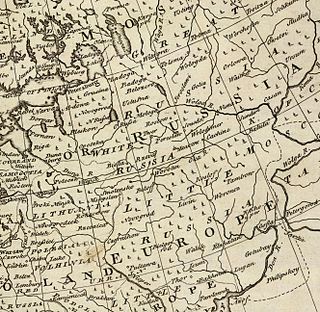
Little Russia, also known in English as Malorussia, Little Rus', Rus' Minor, and the French equivalent Petite Russie, is a geographical and historical term used to describe Ukraine. Since 1334, Yuri II Boleslav, the ruler of the Ruthenian Kingdom of Galicia–Volhynia, signed his decrees Natus dux totius Russiæ minoris, but the expression μικρὰ Ρωσσία is found as early as 1292, in the Byzantine writer Codinus. The distinction between "Great" and "Little" Rus' probably originated among Byzantine, Greek-speaking clerics who wanted to separate the two Ruthenian ecclesiastical metropolises of Halych and Moscow.

Vasily Osipovich Klyuchevsky was a leading Russian Imperial historian of the late imperial period. He also addressed the contemporary Russian economy in his writings.

Mikhail Petrovich Pogodin was a Russian historian and journalist who, jointly with Nikolay Ustryalov, dominated the national historiography between the death of Nikolay Karamzin in 1826 and the rise of Sergey Solovyov in the 1850s. He is best remembered as a staunch proponent of the Normanist theory of Russian statehood.
The Synopsis, also known as the Kievan Synopsis or Kyivan Synopsis is work of history, first published in Kiev in 1674. It interprets history through a Christian conception of time focused on the narratives of creation, fall, and redemption. It also had a political purpose to justify the Treaty of Pereyaslav which annexed the Cossack Hetmanate to the Tsardom of Russia while also claiming a central role for the city of Kiev.
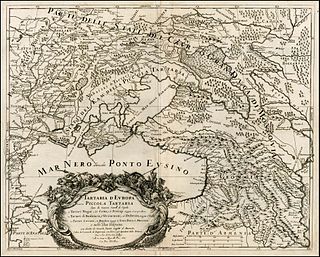
The earliest known usage of the name Ukraine appears in the Hypatian Codex of c. 1425 under the year 1187 in reference to a part of the territory of Kievan Rus'. The use of "the Ukraine" has been officially deprecated by the Ukrainian government and many English-language media publications.

The Rus'–Byzantine Treaty of 911 is the most comprehensive and detailed treaty which was allegedly concluded between the Byzantine Empire and Kievan Rus' in the early 10th century. It was preceded by the preliminary treaty of 907. It is considered the earliest written source of Kievan Rus' law. The text of this treaty is only found in the Primary Chronicle (PVL), and its authenticity is therefore difficult to establish.
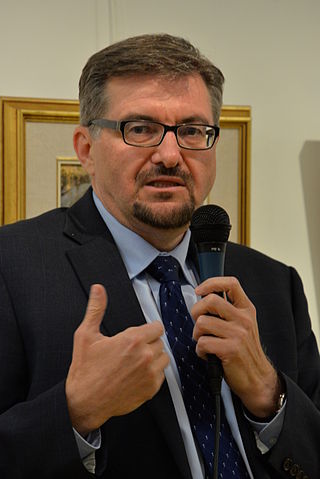
Serhii Mykolayovych Plokhy is the Mykhailo Hrushevsky professor of Ukrainian history at Harvard University, where he also serves as the director of the Harvard Ukrainian Research Institute.
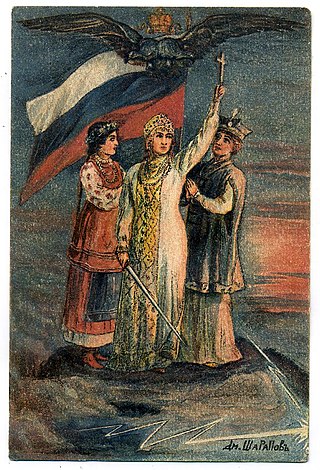
The All-Russian nation or triune Russian nation, also called the pan-Russian nation, is the term for the Imperial Russian and later irredentist ideology that sees the Russian nation as comprising a "trinity" of sub-nations: Great Russia, Little Russia, and White Russia. Respectively, these sub-nations are contextually identified with Russians, Ukrainians, and Belarusians. Above all, the basis of the ideology's upholding of an inclusive Russian identity is centered around bringing all East Slavs under its fold.

Normanism and anti-Normanism are competing groups of theories about the origin of Kievan Rus' that emerged in the 18th and 19th centuries concerning the narrative of the Viking Age in Eastern Europe. At the centre of the disagreement is the origin of the Varangian Rus', a people who travelled across and settled in Eastern Europe in the 8th and 9th centuries, and are considered by most modern historians to be of Scandinavian origin, eventually assimilated with the Slavs. The Normanist theory has been firmly established as mainstream, and modern Anti-Normanism is viewed as historical revisionism.
This is a select bibliography of post-World War II English-language books and journal articles about the Early Slavs and Rus' and its borderlands until the Mongol invasions beginning in 1223. Book entries may have references to reviews published in academic journals or major newspapers when these could be considered helpful.
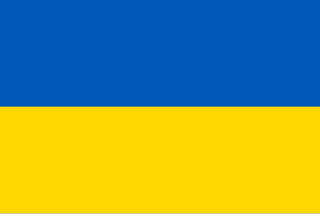
This is a select bibliography of English-language books and journal articles about the history of Ukraine. Book entries have references to journal reviews about them when helpful and available. Additional bibliographies can be found in many of the book-length works listed below. See the bibliography section for several additional book and chapter-length bibliographies from academic publishers and online bibliographies from historical associations and academic institutions.
This is a select bibliography of English language books and journal articles about the history of Belarus. A brief selection of English translations of primary sources is included. Book entries have references to journal articles and reviews about them when helpful. Additional bibliographies can be found in many of the book-length works listed below. The External links section contains entries for publicly available select bibliographies from universities.
Topical outline of articles about Slavic history and culture. This outline is an overview of Slavic topics; for outlines related to specific Slavic groups and topics, see the links in the Other Slavic outlines section below.
The Trinity Chronicle is a Rus' chronicle written in Church Slavonic, probably at the Trinity Lavra near Moscow by Epiphanius the Wise.
Donald "Don" Gary Ostrowski is an American historian, and a lecturer in history at Harvard Extension School. He specialises in the political and social history Kievan Rus' and Muscovy.












